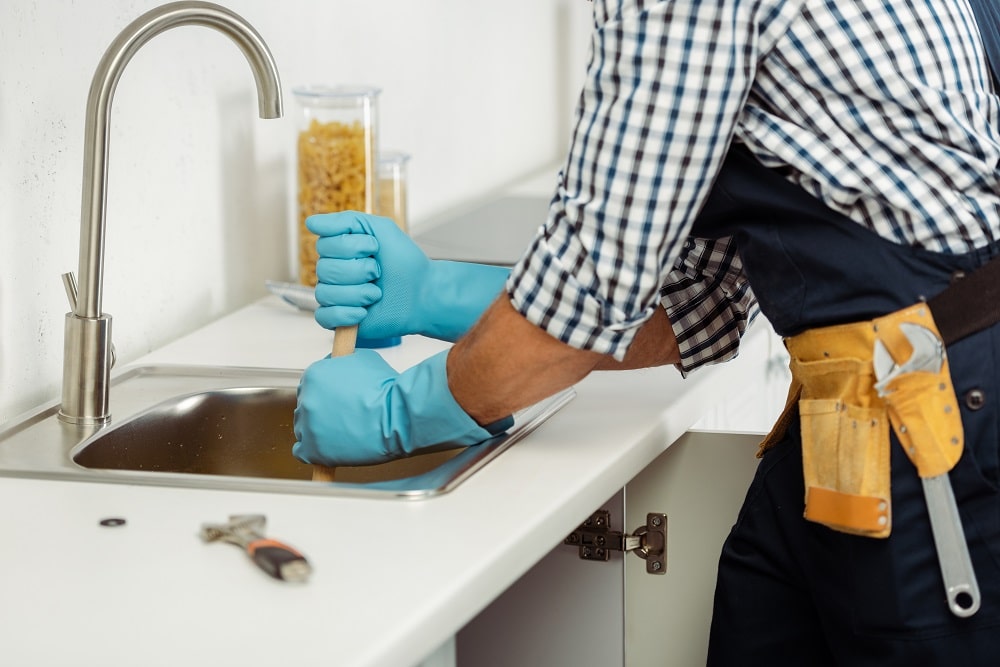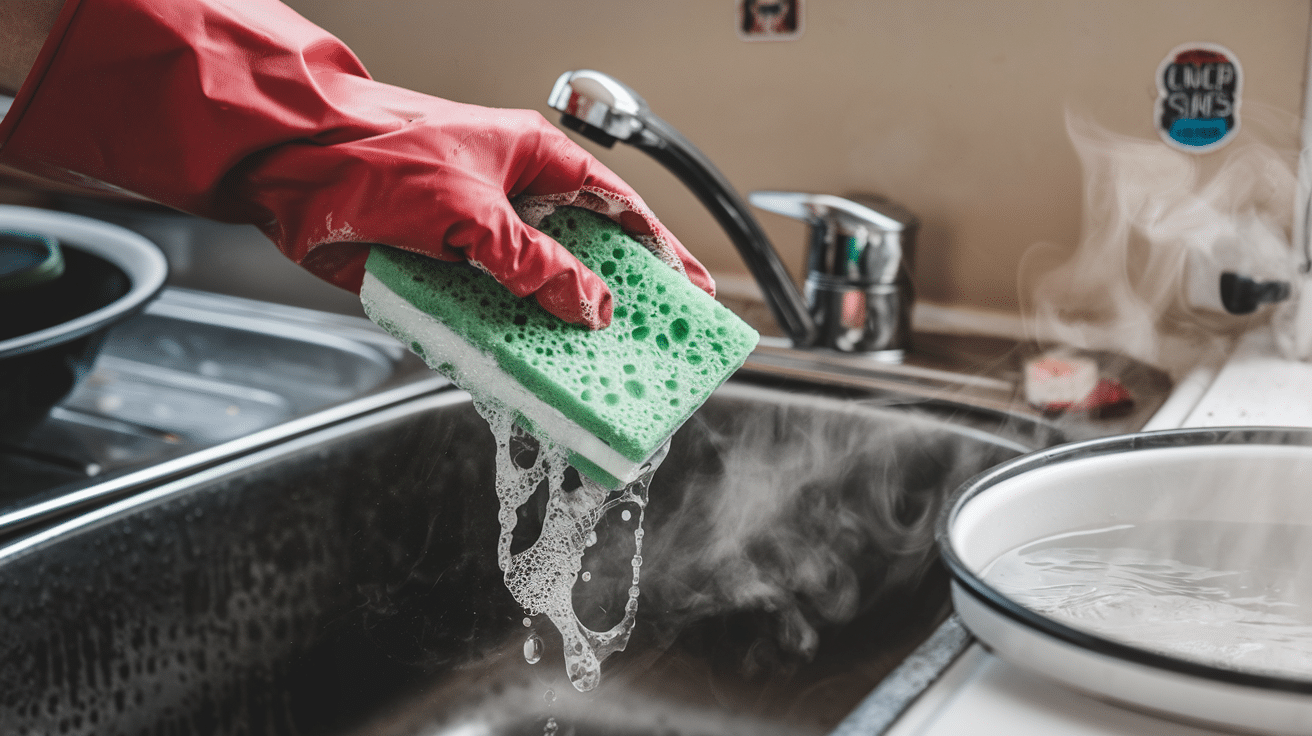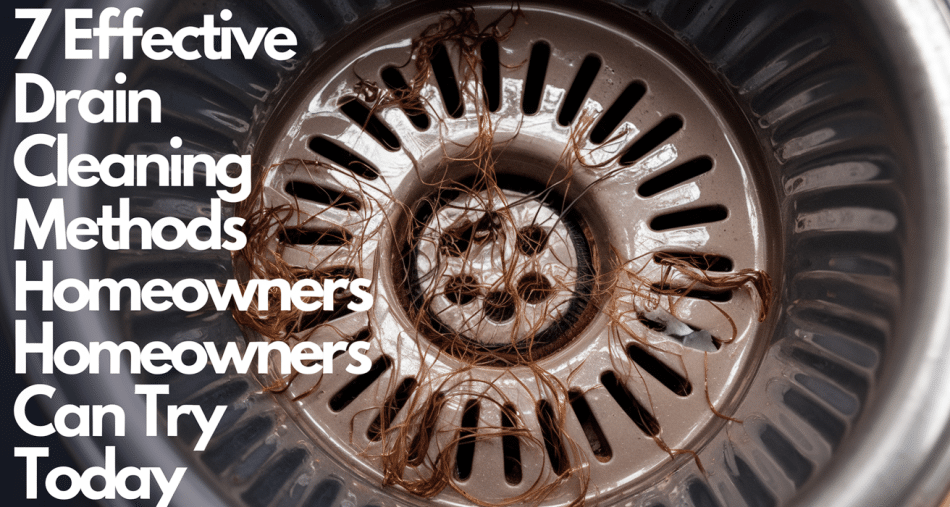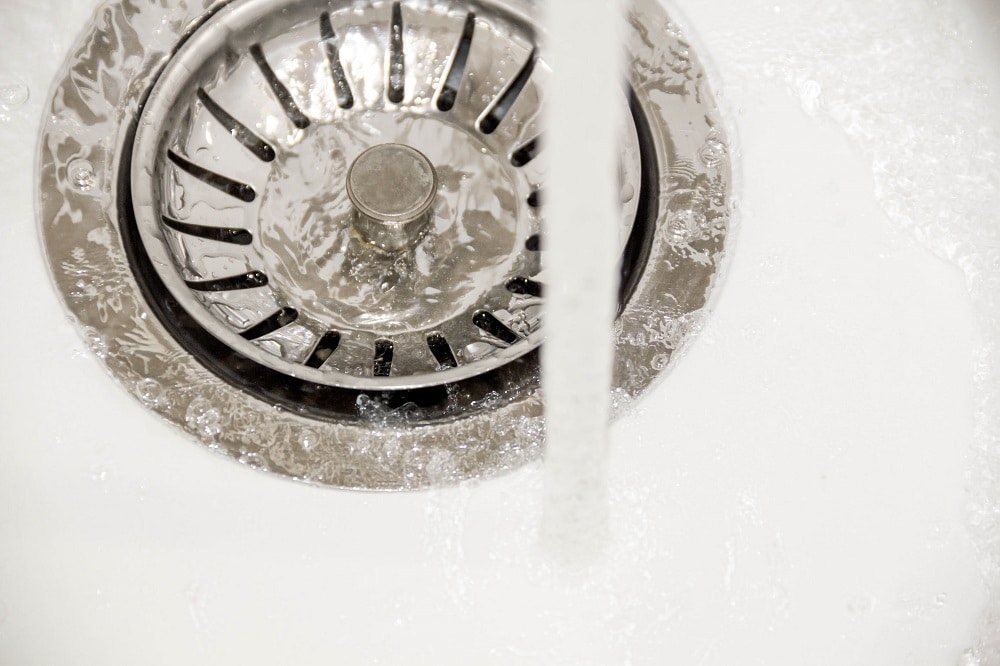7 Effective Drain Cleaning Methods Homeowners Can Try Today
-
 tomsplumbing
tomsplumbing -
 0 Comment
0 Comment
Clogged drains can interrupt your day in a flash. One moment, everything flows fine—then the sink gurgles, water stalls, and you’re staring at a problem you didn’t expect.
At Tom’s Plumbing and Drain Service, LLC, we’ve seen how frustrating this can be. But not every clog requires harsh chemicals or an urgent service call. Many blockages can be handled at home using simple, everyday items.
Looking for help right away? Contact us today and let our team help you figure out the best solution for your drain problem.
Why Drains Get Clogged
 Drain clogs are usually the result of everyday habits. In kitchens, grease and food scraps are the main troublemakers. In bathrooms, it’s typically soap and hair. Then there are products like wipes, floss, and cotton swabs that don’t break down and create slow drains or full blockages.
Drain clogs are usually the result of everyday habits. In kitchens, grease and food scraps are the main troublemakers. In bathrooms, it’s typically soap and hair. Then there are products like wipes, floss, and cotton swabs that don’t break down and create slow drains or full blockages.
Tree roots and mineral buildup from hard water can affect outdoor or underground pipes. And even “flushable” wipes can collect and jam lines since they don’t dissolve easily. If your drains start moving slower than usual or you hear gurgling, it’s best to act early.
Good drain care starts with regular maintenance and knowing what not to send down the pipes.
Why Natural Drain Cleaning Is a Smarter Option
Before turning to chemical solutions, try safe and practical alternatives. Natural drain cleaning methods are reliable, pipe-friendly, and better for your home’s air quality.
What Makes Natural Solutions Worth Using:
- Less wear on pipes—especially in older systems
- Safe for children, pets, and septic systems
- No harmful fumes or skin irritation
- Better for the environment, as ingredients break down safely
Chemical drain cleaners may work fast but come with risks. They can damage plumbing, cost more over time, and harm local waterways. Natural methods, though slower to act, avoid those downsides and still deliver results.
7 Drain Cleaning Methods to Try Right Now
You don’t need fancy tools or chemicals. Most of these methods use products you already have in the house.
1. Baking Soda + Vinegar
Pour ½ cup baking soda into the drain, followed by ½ cup vinegar. The fizz helps loosen buildup. Wait 30 minutes, then pour boiling water to flush it all down.
2. Baking Soda + Salt
Mix equal parts baking soda and salt. Pour it in and let it sit overnight. Flush with hot water in the morning. This mix works well on grease and scum.
3. Dish Soap + Boiling Water

4. Plunger for Sinks and Tubs
A plunger isn’t just for toilets. Use it on slow sinks and tubs to dislodge shallow clogs. A good seal and strong plunges can free up trapped debris.
5. Wire Hanger Hook
Straighten a coat hanger and shape a small hook at the end. Insert gently into the drain and pull out hair or grime near the surface. Go slow to avoid pushing the clog deeper.
6. Coca-Cola for Mild Blockages
Pour a bottle of Coca-Cola into the drain. Let it sit overnight. The mild acid can soften light buildup. Flush with hot water in the morning.
7. Salt, Borax, and Vinegar
Combine ¼ cup salt, ¼ cup borax, and ½ cup vinegar. Pour the mixture down the drain. Wait one hour, then flush with boiling water to clear the line.
Tools and Techniques for Deeper Drain Issues
Sometimes, basic methods don’t reach deep clogs. That’s when tools and extra power come in.
Use a Drain Snake or Auger
For hair, soap buildup, or debris further down the line, a drain snake can help. These long, flexible tools reach deeper into pipes and physically break up or hook the clog. Toilet augers are great for clearing blockages without scratching the bowl.
Try a Wet/Dry Vacuum
A wet/dry vacuum can suck out small clogs or pull up objects stuck near the opening. Use a wet rag to seal the drain opening and focus suction power.
Hydro-Jetting for Stubborn Clogs
Hydro-jetting uses pressurized water to remove grease, roots, and tough buildup from inside the pipe. This powerful technique should be handled by professionals to avoid damaging older plumbing.
Preventing Clogs Before They Start
Avoiding clogs is always easier than clearing them. Simple habits help protect your plumbing and reduce repair needs.
- Use Drain Strainers: These catch hair, food, and other debris before it reaches your pipes. Clean them regularly.
- Never Pour Grease or Oil Down the Drain: Let it cool, then toss it in the trash. Grease hardens inside pipes and causes long-term problems.
Avoid Flushing Non-Degradable Items: Wipes, cotton pads, and paper towels belong in the trash. Even “flushable” items cause buildup.
- Scrape Food Waste into the Trash: Don’t rely on the garbage disposal for large food particles.
- Check for Trouble Often: Look under sinks and around toilets for slow leaks or puddles. Watch for slow drains or smells from pipes.
- Schedule a Routine Plumbing Inspection: A professional check every few years can help spot early signs of trouble and extend your system’s life.
Play It Safe with DIY Drain Cleaning
Even simple methods can cause trouble if used carelessly. Follow these safety basics:
- Handle Boiling Water with Care: Pour slowly and keep your hands clear of steam. Use only on metal pipes.
- Be Cautious with Chemicals: If you must use them, follow instructions and don’t mix products.
- Use Tools Safely: Gloves and eye protection are a good idea. Always read tool guides before using them.
When DIY Isn’t Enough
If your drain is still blocked after trying these methods—or the problem keeps returning—it’s time to call in a plumber. Some clogs are too deep or too complex for home remedies.
Persistent clogs can lead to leaks, water damage, and even mold. Solving the issue early saves money and avoids bigger repairs.
Let Tom’s Plumbing and Drain Service Handle It
Whether you’re facing a slow drain, a stubborn clog, or an ongoing issue, our team is here to help. At Tom’s Plumbing and Drain Service, LLC, we don’t just fix the problem—we help you prevent the next one.
Call us today at 504-732-1733 or visit our contact page to request a service. We’ll keep your drains flowing and your plumbing stress-free.



 Avoid Flushing Non-Degradable Items: Wipes, cotton pads, and paper towels belong in the trash. Even “flushable” items cause buildup.
Avoid Flushing Non-Degradable Items: Wipes, cotton pads, and paper towels belong in the trash. Even “flushable” items cause buildup.